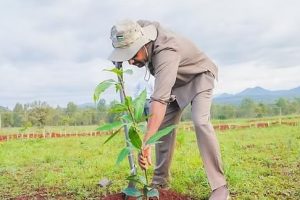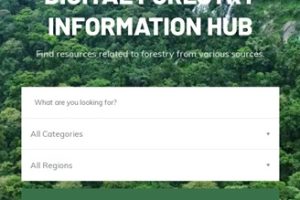
BY DARGIE KAHSAY
According to recent researches globally, though indigenous peoples make up less than five percent of the total human population of the world with around 370 million, they managed over 25 percent of the world’s land surface and support about 80 percent of the global biodiversity, National Geographic website noted. This indicated that indigenous communities are defending earth’s biodiversity.
Protected natural dense forests, ecosystems, diversified biodiversities and protected nature are found mainly within and around indigenous communities in different parts of the world. These people are protecting nature that helps for the survival of our planet and protecting the earth from further natural disasters and hazards. The protected ecosystem is balancing nature, though these areas are being endangered due to global warming and other modernization impacts.
Due to an increase in human population and land use changes by local people and large investment purposes, the exploitation of the high forest areas is pushing resources towards un-sustainability.
The Gumare high forest which is found in Ethiopia’s Gambella State is endowed with high forest coverage, a forest area protected by indigenous community. This high forest protected area is attributed to the tradition of the local community living in the area and managing the forest for centuries. The Mejenger and Shakicho people are the indigenous community in the zone.
Gumare forest area is found in Gambela regional state, Mejenger Zone, Godare woreda of Gumare kebele, around 630 km from Addis Ababa. The altitude of Gumare forest area ranges from 1,800 to 2,200 above sea level, according to an assessment report by Forum for Environment (FfE) years ago.
This zone is endowed with unique biodiversity, cultural values and traditional practices supporting sustainable conservation of forests. Due to this traditional value of the indigenous community, this area is among the few afromontane wet natural forests remaining in the country.
This area which is found currently within the Majang Biosphere Reserve constitutes the largest un-fragmented forest remaining in the country and by far the largest in the Horn of Africa. Majang Biosphere Reserve is included in the network of world biosphere reserves by the Man and the Biosphere program (MAB) of UNESCO in July 2017. The Majang forest biosphere reserve is now one of the 669 biosphere reserves in 120 countries all over the world.
The Gumare high forest area, which currently is found under the Majang Biosphere Reserve is among the places which with highly covered by dense un-fragmented dense forests in the country with full of biodiversities and different species.
According to FfE’s assessment, the communities living in Gumare Kebelle are organized in three forest management cooperatives and have been engaged in participatory forest management on voluntary bases. According to the assessment, the area of the forest is known by its enormous springs like Shai, Gaji, Makadali, Fani, and Bitashi join once to create Godere River and finally to make Gilo River, which is one of the main tributaries of the Nile.
The soils of the area are recognized as a red brown to dark brown of mostly Dystric Nitosol, the assessment stated. Most of these soils are moderately acidic with a high caution exchange capacity. The climate in Gumare, according to the assessment, is medium and it is among the wettest part of Ethiopia with a mean annual temperature ranges between 18 and 240 degree Celsius. Agriculture, forestland, settlement and grazing are the major land uses in the area. The area covered mostly by forest and agriculture, according to FfE.
The Gumare forest, according to FfE assessment, is very important from environmental point of view, in watershed management, as water catchments and erosion barriers as they are located on the tip of the mountain. The area is covered by old and dense forests that helped the area to save different biodiversities, both wildlife and tree species.
The majority of the forest tree species in the area are Aningeria, spp Equbergia, Cordia, Croton, Celtis, Shiflera, eritrinea, Melicia, etc, FfE assessment pointed out. In addition, the forest harbors a number of wild animals such as colobus, monkey, green monkey, bush pig, bushback, leopard, buffalo, lion and a number of bird species, the assessment reported.
The forest areas which have hydrological importance and wet weather have significant importance on the health of the environment and sustainability of the forest ecosystem. In addition, this forest area has an importance to feed the lowland plain of Gambella for drinking water and fishing based livelihood for the Gambella people.
The assessment reiterated that Gumare forest is evidenced to be high forest since all the criteria are fulfilled. All the giant high tree species are available and the forest is closed. The forest comprises of diversified plant tree species, wild animals, birds and enormous spring sources. This makes Gumare forest high forest with multiple importances.
The Shekicho people have been living in the forest depending on it for their livelihoods, the assessment of FfE stated adding the community has been practicing apiary, hunting, gathering of wild fruits and nuts from the high forests since their existence. Forest resources have played a vital role in Shekicho’s life and by implication contributing to conservation.
Traditionally, they owned the forest by clan, divided by means of natural features such as rivers, valleys or hills as boundaries. These forest plots owned by clans are called kobo, which is belonging to a certain family for hanging beehives, FfE added.
Through these divides, it stated, they protect the forest from damages and unwise use. This habit of the community helps the area to conserve its ecosystem and ecology and biodiversity, though this has gradually changed to the borrowed culture from settlers than the traditional knowledge from their forefathers. This trend has a negative environmental impact on the forest since the expansion of agriculture by different actors and drivers, it stated.
The Shekicho people recognized the need of conserving the forest since they have lived in and around the forest and depend on the forest for generations, FfE informant said. Adding the community is using their indigenous knowledge to sustainably utilize the forest products like honey, wild fruits, nuts, game meat, etc by ensuring the resources are protected.
In addition to the conservation and protection indigenous practices by the community, the way that the indigenous communities are getting benefits from the forest are environmental friendly. They use the products that the protected forest is giving them like the honey, wild fruits and the nuts and etc. Forest has always provided a range of goods and services for the people that live in and around them and the Shakicho’s are completely reliant on forests.
The community protects the high forest area from illegal wood consumption and logging with their indigenous forest management system. The communities have both the responsibility and rights to protect the forest area and to utilize properly to preserve it to the next generation with its rich biodiversity.
The Ethiopian Herald March 6/2022





